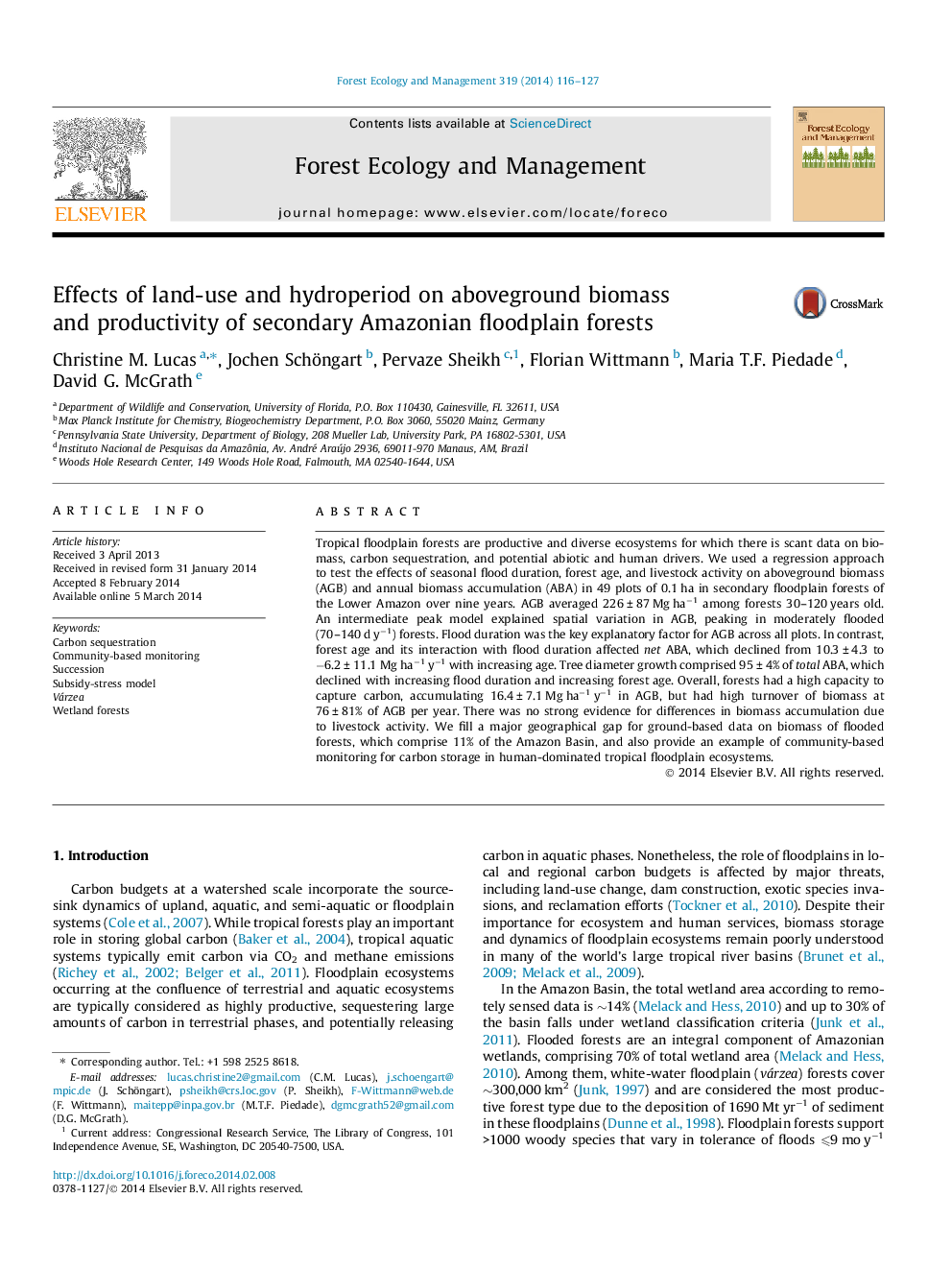| کد مقاله | کد نشریه | سال انتشار | مقاله انگلیسی | نسخه تمام متن |
|---|---|---|---|---|
| 86658 | 159202 | 2014 | 12 صفحه PDF | دانلود رایگان |
• We explore biomass dynamics across environmental gradients in secondary floodplain forests of the Amazon Basin.
• Carbon storage in aboveground biomass peaks at intermediate ages and flood duration.
• Secondary forests have high biomass turnover due to tree mortality.
• Net annual biomass accumulation varies largely with forest age, not flood duration.
• We fill a major gap in ground-based data for carbon dynamics in Amazonian floodplain forests.
Tropical floodplain forests are productive and diverse ecosystems for which there is scant data on biomass, carbon sequestration, and potential abiotic and human drivers. We used a regression approach to test the effects of seasonal flood duration, forest age, and livestock activity on aboveground biomass (AGB) and annual biomass accumulation (ABA) in 49 plots of 0.1 ha in secondary floodplain forests of the Lower Amazon over nine years. AGB averaged 226 ± 87 Mg ha−1 among forests 30–120 years old. An intermediate peak model explained spatial variation in AGB, peaking in moderately flooded (70–140 d y−1) forests. Flood duration was the key explanatory factor for AGB across all plots. In contrast, forest age and its interaction with flood duration affected net ABA, which declined from 10.3 ± 4.3 to −6.2 ± 11.1 Mg ha−1 y−1 with increasing age. Tree diameter growth comprised 95 ± 4% of total ABA, which declined with increasing flood duration and increasing forest age. Overall, forests had a high capacity to capture carbon, accumulating 16.4 ± 7.1 Mg ha−1 y−1 in AGB, but had high turnover of biomass at 76 ± 81% of AGB per year. There was no strong evidence for differences in biomass accumulation due to livestock activity. We fill a major geographical gap for ground-based data on biomass of flooded forests, which comprise 11% of the Amazon Basin, and also provide an example of community-based monitoring for carbon storage in human-dominated tropical floodplain ecosystems.
Journal: Forest Ecology and Management - Volume 319, 1 May 2014, Pages 116–127
